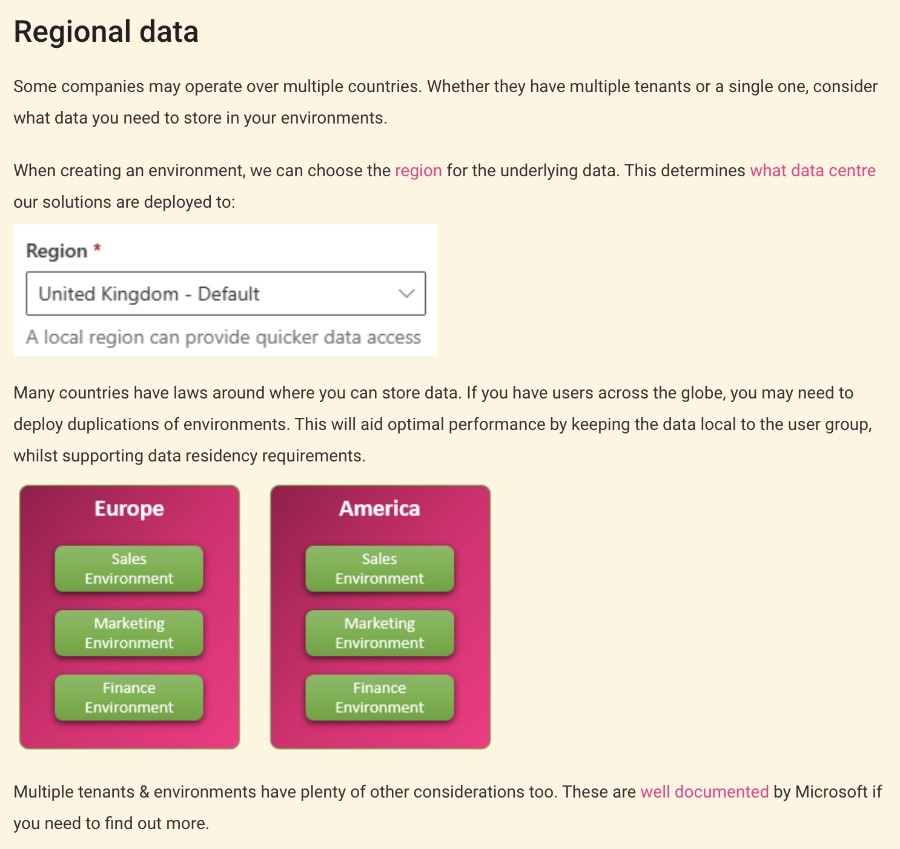
Maximize Success: Power Platform Strategy Guide
Maximize efficiency with our expert guide on Power Platform environment strategy.
Key insights

- Developing a Power Platform environment strategy requires consideration of business goals, project requirements, and data types.
- Starting with your data is crucial, thinking about where it needs to be stored, who needs access, and how it interacts with other data sources.
- Consider regional data needs and laws, which may necessitate multiple environments for data residency and optimal performance across global operations.
- Different types of data, especially sensitive or high-value data, may require separate environments to manage access and maintain data integrity.
- Connectors play a key role in the environment strategy, influencing the setup based on what data sources solutions need to communicate with.
Power Platform Environment Strategy
Crafting an environment strategy for Power Platform is essential as organizations adopt new tools. Multiple environments serve distinct purposes, promoting growth and efficiency. Developing a robust strategy is crucial.
A successful strategy varies, tailored to business goals, project needs, data types, and legal considerations. There’s no one-size-fits-all solution; each business requires a custom approach. It's important to start with your data, considering storage needs, types of data, accessibility, and potential external data connections.
For companies operating internationally, consider data storage in relation to regional laws. Choices about data centers can affect performance and legal compliance. Types of data also influence strategy, with sensitive data often requiring isolated environments for security and access control.
Access control goes hand-in-hand with data types, dictating environment setup. Segregation can simplify security. Connectors, essential for communication between data sources, must align with Data Loss Prevention (DLP) policies, ensuring environment and connector use complies with security standards.
Project-specific needs may dictate the creation of dedicated environment clusters for high-value solutions. This includes considerations for testing layers depending on the project’s scope and value. Real-world scenarios often involve cleaning and restructuring existing environments to align with a strategic vision.
- Start by reviewing current environments and data storage practices.
- Evaluate the use of connectors within environments, considering security and licensing.
- Plan for the future, considering the pipeline of work and potential new uses or expansions of the Power Platform.
- Consider Managed Environments for additional governance and controls.
Analyzing current setups, planning for future needs, and continuous management are key components of a successful strategy. Communication, automation, and day-to-day management form the backbone of effective environment management, ensuring scalability and compliance.
Read the full article Crafting a Power Platform Environment Strategy

People also ask
How to create a Power Platform environment?
The process involves a series of steps.
What are the 4 components of Power Platform?
The Microsoft Power Platform is comprised of four fundamental components: Power BI, Power Apps, Power Automate, and Power Virtual Agents. Supporting elements frequently utilized alongside the Power Platform include Dataflex Pro (previously known as Common Data Services), AI Builder, and UI Flow, which is a component of Power Automate.
What are the two types of environments that you can create in Power Apps?
There are two distinct environment types available in Power Platform.
What is an environment strategy?
An environment strategy refers to a company's long-term plan for managing its environmental practices to align with the expectations of its stakeholders. This involves proactively anticipating future regulations to voluntarily mitigate adverse environmental impacts.
Keywords
Power Platform Environment Strategy, Effective Power Platform Environment, Power Platform Setup, Power Platform Governance, Managing Power Platform, Power Platform Best Practices, Power Platform Configuration, Optimizing Power Platform Environments